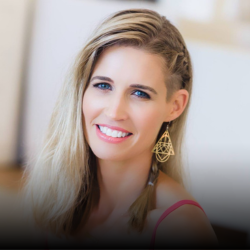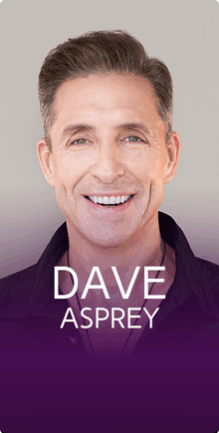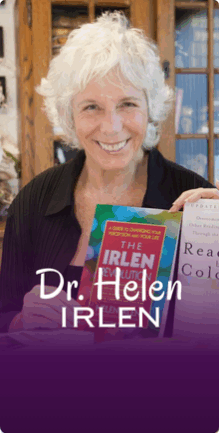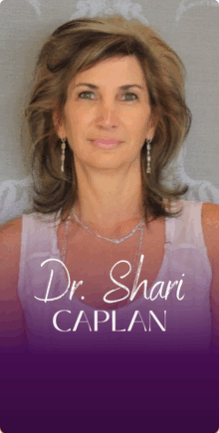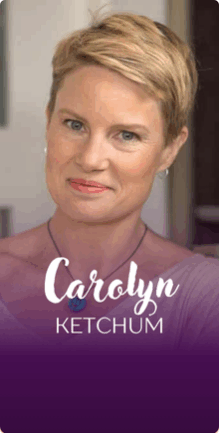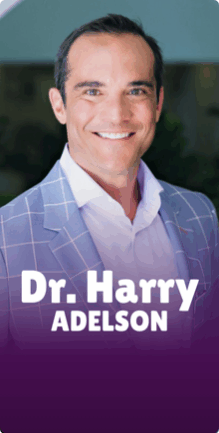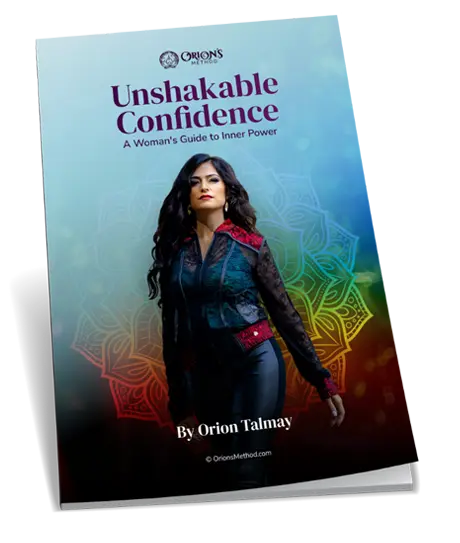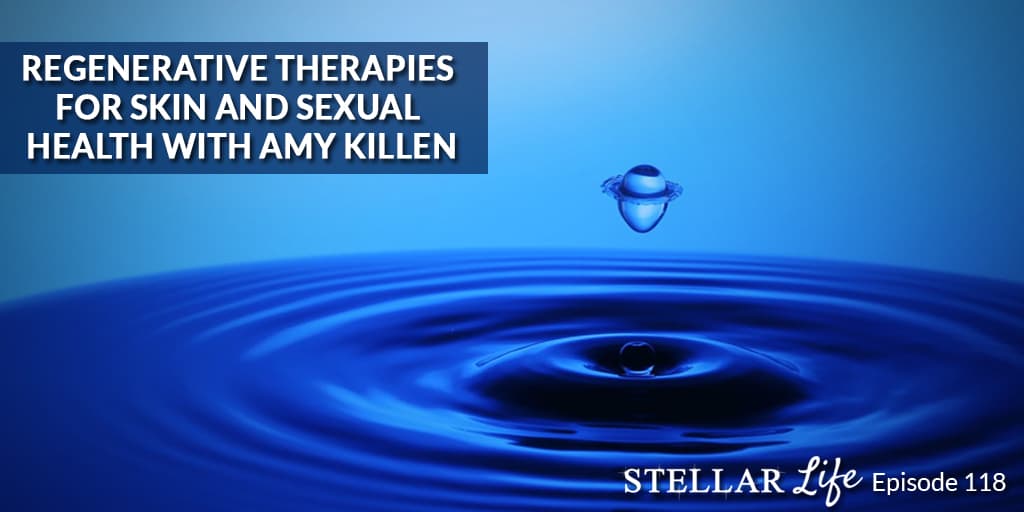
In this Episode
- [03:50]Amy shares a bit about herself, explaining her history in the medical field as well as what she does now. She then discusses what kinds of people typically come to her.
- [05:38]What type of medicine does Amy do, exactly?
- [06:52]Amy talks about the procedure that she did with Orion, and shares how she got into using these sorts of techniques.
- [07:37]Why do lots of people have negative impressions of stem cell therapy?
- [09:51]After her stem cell procedure, Orion has wondered whether the stem cell supply in her bones was depleted after they were harvested. Amy answers this question.
- [12:29]Amy explains that stem cell joint injections can be painful for a few days after the procedure.
- [13:37]We learn about the sexual health injections that Amy does for both men and women.
- [15:47]Amy talks about the gifts that she gives to patients to take home with them after their procedures.
- [17:35]Has Amy had the procedure done herself?
- [19:11]We hear more about what procedures Amy did on Orion’s skin and hair.
- [20:36]Amy shares her thoughts on Botox, which she explains that she does for some of her patients.
- [21:26]Does Amy use any lasers or energy devices?
- [22:10]Amy talks about what the ultimate facial is, specifically for looking more youthful. She recommends combining several different therapies.
- [23:05]What’s good for wrinkles under the eyes?
- [24:07]We go back to the topic of Botox, with Amy discussing whether it’s dangerous to put something unnatural in your skin.
- [25:13]Depending on the cause, some dark spots can be treated very effectively with lasers, Amy explains.
- [26:04]How do balanced hormones affect skin, hair, and sexual health? Amy answers, then discusses her approach to hormones.
- [28:09]Amy talks about the ideal age at which people should come see her for the first time.
- [29:55]We hear more about the role of a healthy lifestyle in having the procedures that Amy offers.
- [31:21]We can reverse our age to some degree, but not completely, Amy explains.
- [31:47]What are Amy’s three top tips to living a stellar life? #1. Having close connections with people. #2. Making good choices regarding diet and exercise. #3. Learning how to deal with stress.
- [33:39]Amy shares some final words of wisdom for listeners.
- [34:13]How can listeners find Amy or get treatment from her?
About Today’s Show
Hey, Dr. Amy.
Hello.
Hello, my friend. How are you doing?
I’m doing great. How are you?
I’m awesome. Welcome to Stellar Life Podcast. I am very, very excited to have you here.
Thank you. I can’t wait to talk to you.
Yeah. We’re going to share some cutting-edge technologies to improve people’s lives. Before we start, why don’t you share a little bit about yourself?
Okay. I’m a physician. I specialize in anti-aging and regenerative medicine. I’ve been doing this about five years. Before that, I was an E.R. doctor close to 10 years. What I do now is I work with people. I use integrative medicine and regenerative medicine and try to make them healthier using prevention and then also, trying to get their bodies to heal themselves as well.
What type of people come to you?
I have two different main practices. But people generally are interested in health and interested in becoming healthier and want to learn tools to do so. Most of my patients have some interest in their own personal health and taking advantage of the newer technologies and things that are out there to make it better.
You were in the E.R. and then you moved into the field of medicine. How did you do that? Why did you do that?
I worked in the E.R. for about 10 years. I’m a board certified E.R. doctor. I loved it, it was super fun. But when I had my kids, which I had three of them in two years, my E.R. shift was super early in the morning, I wasn’t ever sleeping, I was drinking a lot of diet Coke, I was eating trash, I wasn’t exercising, and I was going crazy. At the same time I was realizing that I wasn’t able to spend that much time with my patients. A lot of them were having the same problems that I had. They were very chronically stressed out and sick and didn’t really know how to get better. I decided to help them and myself by learning about preventative medicine and integrative medicine. I started learning about it and then eventually ended up quitting E.R. and transitioning over to doing this full time.
What type of medicine do you do exactly?
It’s a little confusing. I call it anti-aging and regenerative medicine but basically it encompasses a lot of different things. It encompasses integrative medicine, which is using a combination of different types of medicines from traditional medicine, where you use medications and such, to herbs and supplements, to focusing on lifestyle, exercise, and nutrition, and using those kinds of things from medicine. I use a lot of integrative medicine with the focus on trying to get people healthy today, but also giving them the tools to stay healthy longer so that they have increased longevity and a better life.
The way we met was at Docere Clinic, where I did my stem cell procedure with Dr. Harry Adelson. I was under and then there were drillings going on into my fat and my bone. You guys took a little bit of my bone marrow and my fat cells. You mixed it and you injected it all over my body.
Oh yes, we did all those things.
Tell me, how did you even learn about those things? I want you to talk about the procedure that we did. How did you even learn about it and learn how to do it?
That’s the regenerative part of my practice. I spoke already about the integrative medicine part, which is the prevention. Then there’s the regenerative part, which is basically using stem cells and platelet-rich plasma, and other things like that to help your body to heal itself and improve the cellular healing. I learned about it. This whole field is such a new field of medicine that there’s a lot of people doing different things and there are a lot of conferences. I went through a fellowship program through the American Academy of Anti-Aging Medicine. I went through some other training programs. But ultimately, a lot of it comes from just having mentors that teach you what they know and what’s been working for them. That’s part of how I got into that as well.
A lot of people talk against stem-cell therapy. Why is that?
People are a little bit nervous about stem cells because of the idea that stem cells are not regulated by the FDA because they’re cells coming from your own body. They’re not medications that a pharmaceutical company is making. They’re actually cells from your own body so the FDA doesn’t regulate them. People worry about using some of these therapies if they’re not regulated by the FDA, even though the FDA doesn’t regulate things that come from your own body, if that makes sense.
Let’s talk about it for people who don’t know what it means. What does it mean?
Stem cells are the cells in your own body that you have. They’re in every part of your body. They’re in your brain, in your heart, in your muscles, in your skin. They’re everywhere. They are the cells that are responsible for regenerating that tissue. They replicate, they duplicate. But essentially they’re responsible for keeping those tissues alive and healthy. For instance, if you cut your arm, the stem cells in your skin are going to jump into action and they’re going to tell the other cells, “Hey, we need to increase blood flow to heal this wound. We need to increase collagen, we need to increase elastin, hyaluronic acid—all the things that are going to be useful for healing this wound. We need to do that.” The stem cells are the ones who are in charge of regenerating tissue. What happens is as we get older, we don’t have quite as many stem cells in certain parts of the body and then the one that we have are not as active. When you’re a kid, you heal really quickly if you get a wound or something. But when you get older, it takes more time. What we’re doing with stem cell medicine is we’re trying to activate your own stem cells to be more active, to work harder to regenerate tissue, and to make that body part more youthful.
Stem cells are the cells in your own body that you have. They’re in every part of your body. They’re in your brain, in your heart, in your muscles, in your skin. They’re everywhere. Share on XA question that I had in my mind after I did that procedure was, “Okay, so you take stem cell from the bone marrow, you mix it with stem cells from the adipose tissue, which is the fat tissue. But then, am I not depleted in my bones now that I injected the stem cells from the bones and other parts of the body?”
That’s a good question. No. You have a lot of extra stem cells just hanging out in your bone marrow, in your fat. They’re in all different areas of your body. You have stem cells in your teeth; they’re everywhere. We use the fat and the bone marrow because they’re very easy to get to those areas. The stem cells that we’re using are called Mesenchymal stem cells. They’re adult stem cells and at least in the fact, they’re commonly found around the blood vessels so that when you take the fat out and you isolate the stem cells, then you can move them somewhere else. What’s cool about these types of stem cells is that they don’t just have one job. For instance, if there are stem cells living in your fat, maybe while they’re there, their job is to make more fat tissue. If you need more fat, they make more fat. But if you put them somewhere else in the body and they get different signals from the environment, then they can do different things. Those same stem cells that were in your fat, if you put them for instance in your knee because you’re having cartilage problems in your knee, then all of a sudden they’re getting different signals and they will do different things. They’ll increase your collagen production; they’ll increase blood flow in your knee. They have different mechanisms and they do different things depending on where you put them in your body, which is something that is pretty cool about stem cells. But no, you’re not going to deplete your own supply. You have plenty of them.
That’s good to know.
That’s a good question to ask after the fact that you’re like, “Oh no, what did they do?”
The way I went to the surgery I was like, “Yeah, it’s just in and out. I’m going to go in and go out. It’s going to be easy.” It’s a real process and it takes real healing. It’s more than I thought. I did my injections in so many places in my body. For the first two days, I couldn’t even walk. What it does is it tricks your body to think that it went through a really bad accident. My hips were crazy inflamed. I couldn’t stand straight. I remember myself rolling my carry on at the airport and Stephan was running in front of me and I’m like, “Wait. I can’t even walk.” He goes like, “Whoa. So this is how old people feel. That’s terrible.” It passed, after two days I was back to my normal self because it’s not a real injury. It does that.
Dr. Adelson, my colleague who I work with and doing all the stem cells, he does all the joint injections: back, neck, hips, knees, anything. Certainly some of those can be painful for a couple of days afterwards. It depends on the person. Some people don’t really have much pain. Some people do have this inflammatory response like you did where it’s painful for a couple of days and then it starts to get better. The things that I do, I do injections on the skin, the hair, and the sexual organs. Those injections with stem cells don’t generally hurt afterwards. Once it’s done, it’s not usually painful.
Yeah. Let’s talk about those.
Yeah.
I’m delayed. I’m like, “Yeah. Amy injected me in my vagina.”
Yup. My good friends here are like, “I wanted to see you. I’m not sure I want you to look at my vagina.” I’m always like, “No worries, it’s fine. Just bring it in. It’ll be fine.” Sorry, we got off topic. What were you saying?
Yeah. Let’s talk about that.
I do several different things. For sexual health for both men and women, I do injections. The classic injections, which people might have heard of, for men there’s something called the Priapus Shot or P-Shot, which is when we inject platelet-rich plasma which is a step down from stem cells. It’s basically using your blood and getting some growth factors from your blood and injecting those. That’s the P-Shot. There are five injections for men into different areas of the penis. For women there’s something called the O-Shot or Orgasm Shot, which again is Platelet-rich Plasma in a classic form. That’s generally an injection into the clitoris itself after we numb it and then part into the anterior vaginal wall. I do those. I also add stem cells into some other things like exosomes. But add it to the PRP to make it even more rich in signaling in growth factors and regenerating potential. Those are my two procedures for sexual health for men and women.
What does the P-Shot do for men? What does the O-Shot do for women?
The P-Shot, whether it’s with stem cells or without stem cells, I do it a lot of times with stem cells but the P-Shot does a few things. It increases blood flow. It increases blood vessel formation so you actually get some new blood vessels. It increases sensation in some people. It increases pleasure, orgasm, strengthen pleasure and it can increase erection strength like firmness as well as lasting power. I even have some men who say that they’ve got increases in size, although that part hasn’t really been studied as much as the rest of the functions.

It’s been about 3.5 months since we did the procedure, maybe more but something like that.
Yeah.
I know that you gave me a parting gift which was this pink humongous gun with electron. It’s like this super crazy vibrator thing. It comes in a gray pouch. We were like, “What happens if the TSA opens my carry on and sees it?” It looks like a gun. I remember we had our conversation.
We did. I had a male patient. I give all the men penis pumps to take home with them and I give the women these devices called intensity devices.
They’re pretty pleasurable. I like it. It was worth it just to get the pink gun. It was worth it.
I had a male patient, we went through security with his penis pump. At the time the pumps I was using did look like it had a gun-like handle to them. He got stopped by TSA because it was on his carry-on bag. They pulled it out. There’s a full line of people in the airport. The TSA was like, “What is this?” The guy had to explain that it was his penis pump and he just had his procedure and his doctor gave it to him, the whole thing. I’m glad that you did not get pulled over because you’re right. The device I gave you, which is called the Intensity Device, it’s like a pelvic floor strengthener. It’s like an intense unit for your vagina, for your pelvic floor muscles. It contracts them in a way that’s much stronger than doing Kegels at home. It’s large and it definitely is gun-shaped, I will say for sure.
I’m now in Israel. We’re here for a few months. I have to tell you I left it back in Sta.Monica because of the weight.
Oh no.
I know, it’s terrible. But for myself, since the procedure I do feel increasing sensation and more intensity with my orgasm. It’s pretty awesome. Thank you.
Good. That’s great. Yay, I love that. That’s the kind of thing we look for women: increased blood flow, increased lubrication, sometimes even tightness, and then increased pleasure, and sensation as well. Those are the things that we see with women. It’s pretty cool from just a couple of very small, pretty painless injections.
Have you done it to yourself?
I haven’t done it to myself but I have had it done to myself. I have had it done but I didn’t do it myself.
I didn’t want to put that vision in your mind.
That would’ve been difficult.
Yeah.
I actually do most of my own injections. I do a lot of my own facial injections and things like that. But no, I have not done it to myself. When I was first training to do the O-Shot years ago, we had a group of doctors who are all training together. The way that we trained, aside from watching it done on some patients, is we did injections on each other. I did have it done. It was by a doctor who had just learned how to do it. It was in front of a whole group of other doctors.
That sounds really kinky.
It wasn’t like a group of 30. It was a group of 5 doctors. It was very doctorly.
Yeah it’s okay, of course. It’s really kinky though.
It does sound that way, yes.
Wow. Did you feel any difference?
I did. I feel it lasted for about 1.5 year, which is about right for PRP. Platelet-rich plasma tends to last about 12-18 months. I definitely noticed an uptick sensation and things like that during that time. It’s been a few years. I should get it done again. It’s been a while since I had it but I definitely enjoyed it.
Yeah. Wow, really? I really hope it’s going to stay for life.
Well, you can always come back and see me.
Yes.
You know where to find me.
I know where to find you, yes. You’ve done this for me and you also did my skin therapy, you did this PRP in my hair. Can you share a little bit about that?
For you, I did the PRP and I also did stem cells. The stem cells that I used on you were derived from fat. There are several different ways to do stem cells but I combine the stem cells with the fat plus the PRP. I did injections in your hair, even though you have lovely hair and then I had the injections in your skin. What we’re trying to do with that—for skin for instance, we’re trying to increase your skin cells, your fibroblast to start making more collagen and elastin and hyaluronic acid, which are all things that give your skin structure and elasticity and moisture. Those are all components that as you get older than 25 or so, they start to go down and you lose some of them. We’re encouraging your skin to make new skin, to make healthy skin.
How long does it take my skin to make new skin?
You’ll start to see benefit usually between four and six weeks but then it can take three or four months sometimes really to see all the benefits. It’s not like you have a whole new face. We’re not doing a face lift, we’re even doing fillers or Botox or things like that. It’s really more about improving your skin texture and tone and color and thickening of the thinner layers of your skin a little bit. It’s a gradual thing. People just look healthier and have this glow about them after they have these kinds of procedures done.
What you think about Botox? Is that a good thing or a bad thing?
I do Botox for patients. I think it’s very helpful. I certainly have some patients that are adverse to it and don’t want to do it, and that’s also totally fine. The good thing about Botox is it helps you prevent what are called dynamic wrinkles, the wrinkles that are created from moving your face muscles over and over again. If you can decrease the movement to those muscles, then all of a sudden your wrinkles will get better and better. We can use as a preventative treatment as well as to help treat the lines and wrinkles once you have them. I tend to like to combine a bunch of different therapies together. I’ll do Botox and maybe hyaluronic acid fillers plus PRP plus stem cells. There’s also some great lasers and energy devices. All of it has benefit and they all do different things that could be helpful.
The good thing about Botox is it helps you prevent what are called dynamic wrinkles, the wrinkles that are created from moving your face muscles over and over again. Share on XDo you use any lasers or energy devices?
Yeah. In my other office, not the one that you visited but the other one, we have a couple of different lasers that do different things. IPL lasers then we have Radiofrequency lasers. I personally had several different laser treatments, some of which were more invasive and some of which were less invasive. With some of those lasers you can use PRP and stem cells with the laser. Right afterwards they help with your healing because some of these lasers are pretty invasive and can cause weeks’ worth of downtime. But if you use something like PRP which is full of great growth factors and healing factors right afterwards, then you could actually decrease the time to healing as well as get better results in the end.
What’s the ultimate facial? If I want to look 10 years younger, what do I need to do?
Oh my gosh. There are so many things out there now. I would say combining several different therapies together and probably over several sessions. It’s hard to do everything at one time. It partly depends on how old you are, what your problem areas are. But you can do a little bit of hyaluronic acid filler, which is basically just giving a little bit of volume to areas like the mid-face or around the eyes where we tend to lose volume as you get older. Then something that’s really good for the skin like deeper laser like—maybe a CO2 laser or erbium laser, which are ones that are going to take off a part of that top layer of skin that then when your new skin grows back, it’s super youthful and really help with fine lines and wrinkles and discolorations and things like that. If you were to combine that with some of these biological or cellular things like the Platelet-rich plasma and the stem cells and the exosomes, that will be a pretty awesome result.
What’s good for wrinkles under the eye?
The under eye area is difficult. Wrinkles like the ones you get, like crow’s feet wrinkles from smiling, when you get those little lines at the sides those are easily fixed with something like Botox or anything like neurotoxins. The under eye area where people will get dark circles which I actually have, I have my own dark circles which I had my whole life. Dark circles are thin skin underneath your eyes or those hollows underneath your eyes can be really tricky. You can put a little bit of filler underneath there. Hyaluronic acid filler can be helpful if it’s a volume issue. You can also use PRP and stem cells under the eyes to help thicken up that tissue and help with the capillary leaking that’s causing some of the darkening. There are some lasers out there that can help as well. I’ve actually tried them as a patient and did not really felt like they were that helpful. But they have new ones coming out all the time. I would say fillers, some kind of biological stem cells or PRP and then plus or minus laser therapy.
I want to go back to Botox. Isn’t it dangerous to put a filler in your skin that is not natural?
It depends on who you talk to. A lot of patients are very against putting anything that’s not natural on or in their body, I totally respect that. Botox is different than filler. Botox is a neurotoxin. It comes from a Clostridium bacterial infection. Botox certainly could be dangerous if you put in thousands and thousands and thousands of units at a time. But if you’re just putting in 20, 30, 50 units which is what we do with cosmetic patients, it’s very safe. The results last 3-6 months but there’s no any permanent problems for most people. Fillers, which are the ones we use for volume that’s like Juvederm, Restylane, and things like that, that’s made from hyaluronic acid, which is something that’s already in your face, it’s already in your skin. It helps your skin to hold water. Fillers we can give when you have areas that have lost volume. Those stay for more like 1-2 years. That’s one of those things where it’s generally very well tolerated and people have no problems in general. But it’s possible to have some reaction to both of them.
What about dark spots?
Dark spots, depending on the cause, can be treated pretty successfully with lasers. If it’s a hormonal dark spot like melasma, then usually we’ll avoid heat and lasers that can make it worse. But there are some creams like hydroquinone creams and things like that. They can help with dark spots if we can’t use lasers on them.

How do you know if you can use them or not?
Usually just by looking at them. Melasma is usually multiple dark spots that’s generally hormonal-related. Sometimes it’s during pregnancies or after pregnancies or things like that, not always. That has a specific look about it. Those kinds of dark spots, we just want to be careful with adding more heat. The sun can make it worse as well as lasers. Just by doing a skin exam we can decide what the best treatment is usually.
How do balanced hormones affect skin, hair, and sexual health?
Oh, that’s a good question.
I wonder.
I do a lot of work with hormones and replacing hormones, things like testosterone in both men and women, and estrogen, and then progesterone in women. As we get older, even 30, 35 or so, we start to have declining levels of some of these hormones. For instance estrogen for women is extremely important for your skin. It’s one of the signals that’s telling your skin to keep cranking up the collagen and keep your skin looking youthful. As women go through menopause and they stop making estrogen, they notice a big decline in the health of their skin. All of a sudden their skin gets really thin and creepy, it tears easily, it wrinkles more, and it sags more, all the things that wxe don’t want. Estrogen is a big part of that especially for women. Testosterone is somewhat helpful but estrogen is really important to have in your body forever as far as I’m concerned, but especially on your skin.
What do you do? Do you do bio-identical hormones? I guess you take blood tests but what’s your approach to hormones?
Yeah. Any patient who comes in for anything that could be health-related, we’ll do a bunch of blood tests on them including checking their hormones, their estrogen, progesterone, testosterone. We also check cortisol which is the stress hormone. We check all of the other main tests, liver, kidneys, blood counts, all of that—markers of inflammation, we’ll check. Once we have the blood test back, we’ll talk to the patient. We’ll see what their symptoms are and we can decide what the best approach is. I only use bio-identical hormones, which means that there are hormones that are the same molecules as what your own body makes. They match what your own body is making. We’ll use those hormones in very specific, personalized doses for patients depending on symptoms and labs and things like that.
You said at age 35—to come see you, something like that. How does it work?
Everyone’s different. Some people don’t have any problems or symptoms until later 40, 45. But I have some women and men who start noticing changes even in their mid-30s. They have less energy, they’re starting to gain weight, they’re having a harder time building muscles, they are feeling more stressed and aren’t dealing with it as well; they may have some skin problems or hair loss. There are all different symptoms that might bring you to see me. We take a good history and then go from there. But for women for instance, usually in about mid-30s you start making less testosterone and less progesterone, which are two things that you’ll continue to need as far as I’m concerned. We can replace those things and then 10 or 15 years down the line, maybe age 50, is when you start actually going through menopause. That’s when you lose your estrogen. It’s 10 or 15 years before menopause starts. You can actually have some hormonal changes and fluctuations that can make you feel not great.
Yeah, for sure. It could cause depression, it could cause low levels of energy, and it could cause a lot of things—mood swings. Always check your hormones. I wish you could get hormones just from our food and won’t have to go and get them in creams, in pills, and all that.
There are some phytoestrogens, phyto—like plants. There are some plants like soybeans and things like that that have some estrogen-like activity. Certainly not everyone chooses to replace their hormones. But I do see in a lot of people just big improvements in the way that they’re feeling when we just add a little bit of those hormones and get them back to more youthful levels.
Let’s talk about healthy lifestyle and how it all works into what you call rejuvenating medicine.
Obviously, we all know that being healthy is important for a number of reasons. As far as stem cells go, you have to be healthy to have healthy stem cells. In order for your stem cells to be able to make new tissue, to make new skin, to make new cartilage for your joints, all those things, you have to have really good stem cells. Having a good diet and exercising and all of these things will certainly make those stem cells healthier. I have patients, for instance that they smoke a lot of cigarettes. They’ll come and they want to do procedures. I’ll just tell them, “Your stem cells, your Platelet-rich plasma is not going to be as healthy as someone else’s.” Unless they’re going to stop smoking, then I won’t even do those kinds of procedures on them because it’s not going to heal as well and have as good result as someone who was not smoking. Those things are important. A low-sugar diet is really important for all the areas of health that I treat. It’s important for your skin because sugar in the skin can cause really fast aging of the skin. Certainly, it’s important for sexual health because we know that sugar is one of the main contributors to arthrosclerosis which causes blood flow problems. If you don’t have blood flow then you don’t have good erections, you don’t have good orgasms, and all of that. It’s important for hair as well. Basic things like not eating a lot of sugar and exercising and not being super stressed out is actually really important for all the things that I do.
Do you believe we can reverse our aging?
I believe we can reverse it to some degree. I don’t think that you can reverse it completely. There are certain parts of aging that we don’t have really control over, even with the best of lifestyles. But I do think that we’re learning more and more, and certainly with a healthy lifestyle you could make a huge difference in how quickly you age going forward.
What are your three top tips to living a stellar life?
Oh my goodness, that’s a big one. I feel like having good close connections with people is really important. Friends and family, the community that you care about, is probably my very biggest tip. Then making good choices as far as diet and exercise is really important obviously. I think learning how to deal with stress and not letting it take over your whole brain and your whole life is something that we all struggle with but that’s something that can make a huge difference as well.
Learning how to deal with stress and not letting it take over your whole brain and your whole life is something that we all struggle with but that’s something that can make a huge difference as well. Share on XHow do you deal with stress?
I deal with it by exercise for one thing. I do yoga exercise. I like to go on long walks just by myself around the neighborhood. I talk to myself sometimes on those walks and people think I’m crazy.
They researched and people that talk to themselves are intelligent.
Oh, was that right? That’s so good. I talk to myself all the time. I just thought I was a little bit crazy.
You were just very intelligent.
That’s awesome. I do all those things. Then I just try to tell myself like, me getting stressed out about this is actually making me less healthy so stop being stressed out about it. There’s some degree that could help a little bit.
Sometimes I get stressed about being stressed.
I know, right? You’re like, “Oh my gosh, this is making me so unhealthy.”
I know better. I know I have all the tools. Why was I stressed?
Exactly.
I teach these things.
It’s true. It’s not perfect. But I find that if I can get away, if I could just go outside—often times it’s my kids or my husband or whatever. If I can just go outside and walk around a little bit, then when I come back things have usually gotten better on their own. I tend to do a lot of just walking away.
Do you have any final advice to share with our listeners?
I think your listeners are pretty savvy. From what I understand they know a lot about being healthy. It took me a long time to figure all these out. It’s only been the last five or six years that I’ve started really being conscious of such things. My advice is just to keep learning. Hopefully, I’ll be able to do the same.
Awesome. Where can people find you? How can they come and get treatment from you, with the PRP and the stem cells, and the O-Shot and the P-Shot, and the lasers, and all these new technologies, and all these super cool stuff that you do?
All the things. On social media I’m Dr. Amy B. Killen. I work at Docere Medical. There’s a website for that, doceremedical.com. It’s where I do all the stem cell stuff. I also have my own website that I’m putting together right now, that’s dramykillen.com. It will have links to all the different things that I’m doing in different places and hopefully be a good resource.
You know what’s really awesome about you?
Oh, what is it?
It’s to have a doctor that is so smart and savvy and knowledgeable and great and also such a freaking cool, awesome person.
Oh, thank you. That’s sweet of you to say. I think you’re pretty cool too.
Thank you. Thank you for everything that you shared here on the episode. Thank you for being you.
Thank you. It was super fun.
Thank you. Bye.
Bye.
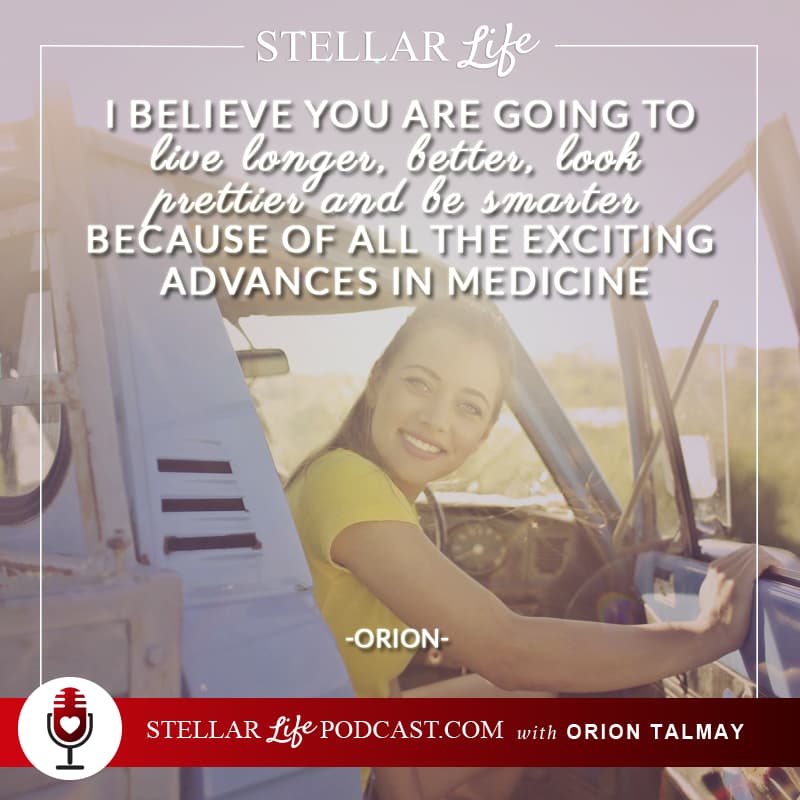
img class=”aligncenter wp-image-3794″ src=”https://orionsmethod.com/wp-content/uploads/2024/07/1_2-6.png” alt=”” width=”600″ height=”600″ />
